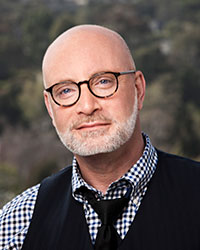 Dr. Robert Weiss LCSW, CSAT
Dr. Robert Weiss LCSW, CSAT
Each of us has a “map” in our brain of what we find erotically appealing. The technical term for this map is “arousal template.” By the time we are 4 to 6 years old, our arousal template is largely in place, even though we are not yet sexual. As we age and experience life and sexuality, erotic elements can be added to (or, more accurately, uncovered within) our arousal template. But for the most part elements cannot be eliminated from an arousal template.
Researchers do not fully understand how the various things to which we’re attracted appear in our arousal template, though there appears to be a variety of sources. In a general way, these sources fall into one of three categories: genetic, learned, and cultural.
- Genetic: physical health, sexual maturity, fertility, fidelity, facial symmetry, reproductive age, waist-to-hip ratio
- Learned: experiences built on the genetic code, learned through classical conditioning (pertinent to both sex/porn addiction and chemsex addiction), can draw energy from salient experiences and past trauma or wounds. These processes are often unconscious.
- Cultural: influenced by environment such as family messages, early sexual experiences, religious influences, media (magazines, TV, movies), pornography, gendered messages, current fashion trends
Most of the time, elements within an arousal template are linked like a chain, with one element leading to the next.
For recovering sex, porn, and substance/sex addicts, understanding the links in their arousal template is useful with relapse prevention. When an addict fully understands his or her arousal template, it is easier to see how seemingly innocuous people, places, and events can trigger a desire to re-engage addictive behaviors, and one of the keys to halting the cycle of addiction is taking contrary action at the “triggers” stage – before fantasy and ritualization take root.
For sex, porn, and substance/sex addicts, arousal templates can escalate along with the addiction, eventually becoming problematic in numerous ways. Most commonly, they become:
- Fixed, rigid, and obsessive.
- Unhealthy, maladaptive, inappropriate.
- Contrary to one’s values.
- Contrary to one’s own and other’s boundaries.
- Deviant or paraphilic.
When arousal templates escalate in ways that create problems or consternation for an addict, especially addicts who find that they now need “super-stimulation” to feel sexual arousal, achieving and maintaining sexual sobriety can be difficult. They want to have a healthy (loving, connected, intimate, honest) sexual life, but that type of sex no longer provides the erotic charge they’re used to getting.
Worse still, elements of an arousal template do not ever disappear. Once something is added to (or uncovered within) a person’s arousal template, it’s there to stay. This does not, however, mean that a person has to act upon everything in his or her arousal template, or that the reward center of an addict’s brain cannot reset to levels where non-addictive sex once again creates arousal and enjoyment.
So how does an addict achieve sobriety and learn to enjoy non-addictive sex? The answer to that question is simple – but not easy to achieve. First and foremost, the addict must step away not only from sexually addictive behaviors but sexually addictive fantasies. Otherwise, those elements of the arousal template will stay active (especially if reinforced with masturbation) and at the forefront of the arousal template. At the same time, addicts can create new fantasies (or return to old fantasies) of intimate sexuality with a loving partner.
Think about a superhighway versus a pathway through the woods. Addiction fantasies are like a well-maintained eight-lane freeway. Traveling them is fast and easy. For addicts, too fast and too easy. Addicts must stay away from the superhighway and let it start to crumble and become overgrown with weeds. At the same time, they must either forge a new pathway through the woods or revitalize an old pathway. And they do this knowing that the superhighway will always be there, even if it’s crumbled and overgrown, and their walking path through the woods will never get them where they want to go with the speed or intensity of the old freeway.
That said, walking through the woods can be very enjoyable.
In sobriety, sex, porn, and substance/sex addicts must accept that they will never again receive the massive jolt of dopamine and adrenaline they got from their addiction. And that is actually OK. In fact, most recovering addicts eventually find that they prefer the lesser rush of intimacy-based sex because the emotional connection it provides is what they actually craved all along.
* * * * * * * * * *
If you or a loved one are struggling with sex addiction, Seeking Integrity can help. In addition to residential rehab, we offer low-cost online workgroups for male sex addicts. For information on the next sex addiction workgroup, click HERE.
